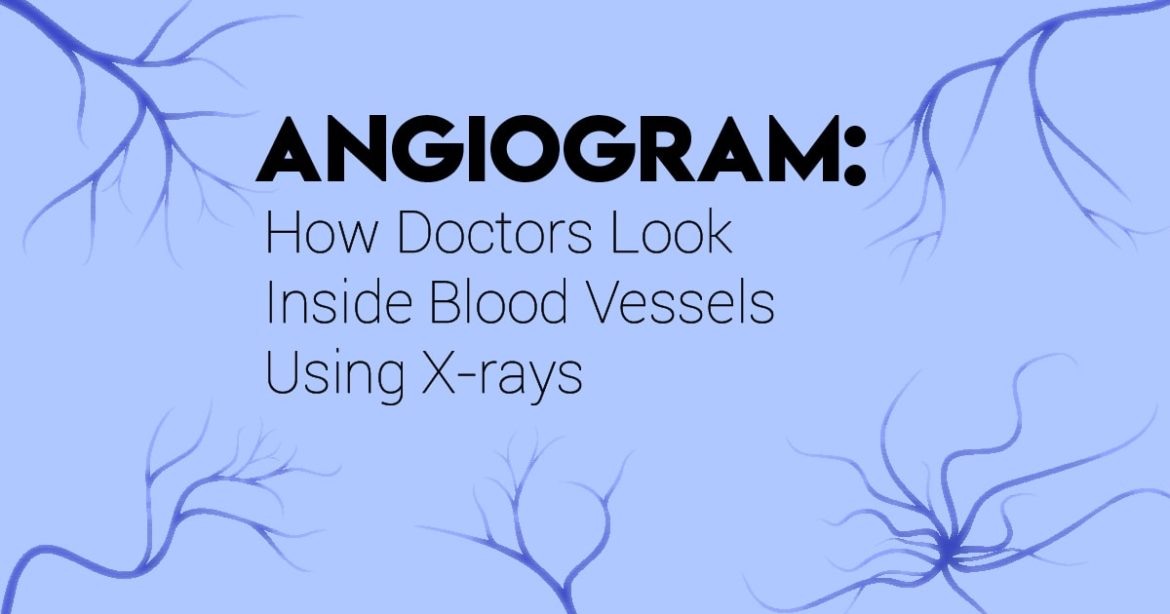Most people have heard of x-rays, but what about angiograms? If you have a medical condition that affects your vein or vascular health, your doctor may order an angiogram. An angiogram is an innovative procedure that allows doctors to see into your blood vessels, and is now considered the standard procedure for evaluating blockages in the arterial system. At UVA Radiology and Medical Imaging, we want you to feel informed and prepared going into your angiogram procedure.
How it Works
At its most basic definition, an angiogram is an x-ray of blood vessels. Normally, x-rays take images of solid structures like bones, but angiograms are a little different. Angiograms are when doctors inject contrast dye (usually an iodine dye) into your bloodstream before taking an x-ray. Once the x-ray is taken, the contrast dye casts a “shadow” on the radiograph that shows the shape, structure, and flow of the blood vessels.

Angiograms help doctors examine blood vessels in different parts of your body to help diagnose conditions and plan for future treatment. They help radiologists check for blockages, malformations, or other issues in your blood vessels. Radiologists perform angiograms routinely to help diagnose conditions like Peripheral Artery Disease (PAD), Congenital Vascular Malformations, or Critical Limb Ischemia (CLI). They can even help diagnose urgent, life-threatening conditions like strokes and aneurysms.
What to Expect
An angiogram can take anywhere between 15 minutes to several hours, depending on what part of your body is being imaged and the extent of the imaging required.
When performing an angiogram, the doctor will first numb an area of either your arm or groin with a local anesthetic. He or she will then make a small incision and insert a plastic tube called a sheath into the blood vessel. Next, the doctor will insert a flexible tube called a catheter through the sheath and into the blood vessel. They will guide the catheter to the right part of the blood vessel and inject the contrast material into the blood vessel through the catheter. You might feel a brief sensation of flushing or warmth after the contrast injection.
Visualizing Your Blood Vessels
As the contrast dye moves through your blood vessels, x-ray images are taken to track the dye’s flow, and thus the flow of your blood vessels. After the injection, a radiologist will examine the images and interpret the angiogram based on what they see. This interpretation can help guide further therapy and will allow your doctor to know if there are any blockages or other complications in your blood vessels.
Once the procedure is over, the medical team will remove the catheter and close the incision. Depending on the length of your procedure and the site of the incision, you may need to lie flat afterwards to prevent bleeding from the incision. Usually patients can return home the same day as their angiogram, but in some cases they need to stay in the hospital overnight.
After the procedure, make sure to drink plenty of fluids to help flush the contrast out of your system. Ask your doctor when you can resume medications and your normal activities. The site of the incision will likely remain tender for a while after the procedure as your body heals.
Getting Comfortable with Angiograms
While the word angiogram is not familiar to most people, angiograms are an important, commonly used tool in diagnosing vascular issues. At UVA Radiology and Medical Imaging, we want you to understand how this tool works to go into your exam with more confidence.
To learn more about the types of conditions angiograms diagnose, take a look at our articles on vein and vascular issues. To learn about additional types of angiograms, click on CT Angiograms and MR Angiograms.



